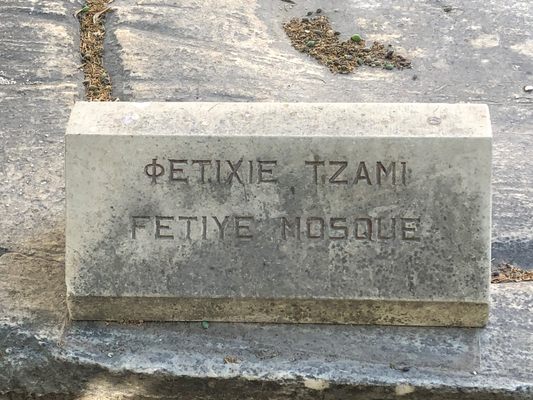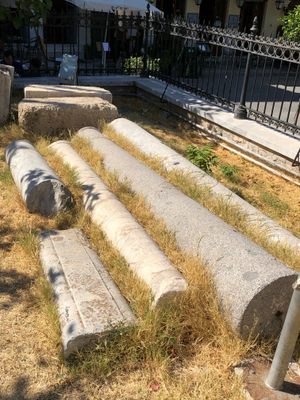About
Upon the Ottoman conquest of Athens in 1458, the Sultan admired the city’s ancient temples and monuments so much that he quickly issued an edict to forbid their destruction and to repurpose them for public use. It was decided that the city’s primary mosque would be on top of the Acropolis, with the conversion of the Parthenon. The site of a ruined eighth-century Christian basilica across from the Roman Agora was decided as the location for another important mosque: the "Mosque of the Conquest,” or the Fethiye Mosque.
The Fethiye Mosque remained an important part of Ottoman Athens until the Venetians captured Athens in 1687 during the Morean War. The Venetians converted the mosque into a Catholic church and dedicated it to Dionysius the Areopagite. But the Venetian hold on the city was brief, and they fled in in 1688.
Due to extensive damage during the war, the majority of the structure was demolished and a new structure was rebuilt and opened again as a mosque in 1690. The new building was constructed in accordance to a quatrefoil style, with a large rectangular main hall crowned by a dome supported by four pillars, with only a small portion of wall remaining from the original building.
The building remained a mosque until the Ottoman defeat by the Greeks in 1824, with the victorious Greeks first using it as a school with the aim of educating Greeks and to promote the love of Greek culture. It was at this time that the mosque’s minaret was removed.
The building was later converted to a military barracks in 1834, and after that a military prison and then a military bakery, where the building was enlarged and modified to accommodate large kilns. In 1935, the building was remodeled to remove the recent additions and from that point forward was used for the artifact storage until the Greek government ordered its full restoration in 2010. The Central Archaeological Council sanctioned the plans in 2013, and the building was fully restored and reopened to the public in 2017.
Related Tags
Know Before You Go
You can view the building's exterior quite clearly from Pelopida and Panos Streets, and above from the north slope areas of the Acropolis. If you wish to view the inside, entry is via the Roman Agora.
Community Contributors
Added By
Published
September 16, 2019

















































